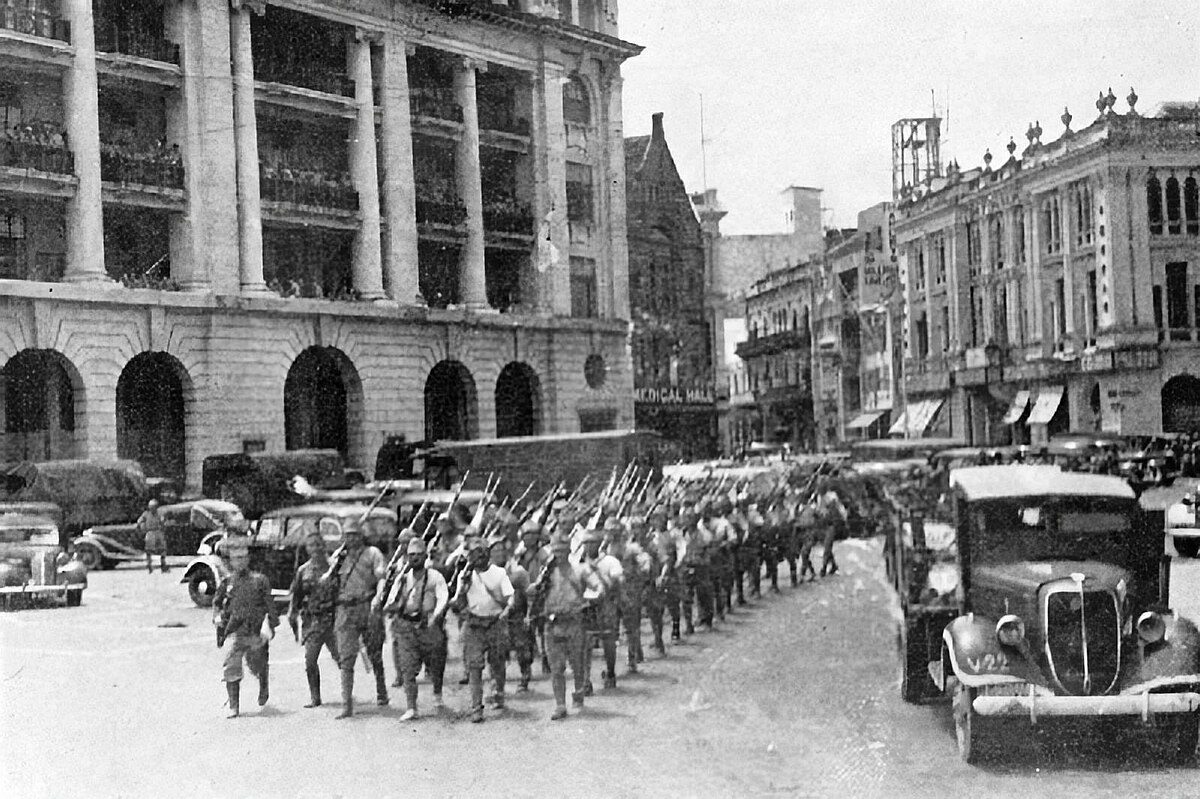
Battle of Singapore
SingaporeIn the interwar period, Britain established a naval base in Singapore, a key element of its defence planning for the region. However, shifting geopolitical scenarios and limited resources affected its actual effectiveness. Tensions grew when Japan eyed Southeast Asian territories for their resources. In 1940, the capture of the British steamer Automedon revealed the vulnerability of Singapore to the Japanese. This intelligence, combined with the breaking of British Army codes, confirmed Japanese plans to target Singapore.
Japan's aggressive expansionist policies were driven by a dwindling oil supply and an ambition to dominate Southeast Asia. In the latter part of 1941, Japan strategized a series of simultaneous attacks on Britain, the Netherlands, and the United States. This included the invasion of Malaya, targeting Singapore, and the seizure of oil-rich regions in the Dutch East Indies. The broader Japanese strategy was to solidify its captured territories, creating a defensive perimeter against Allied counter-movements.
The Japanese 25th Army launched its invasion of Malaya on 8 December 1941, coordinating with the Pearl Harbor attack. They progressed swiftly, with Thailand capitulating and allowing passage to the Japanese forces. With the invasion of Malaya underway, Singapore, the crown jewel of British defence in the region, came under direct threat. Despite its formidable defences and a larger Allied force, strategic mistakes, and underestimations, including the British overlooking the possibility of a land-based invasion through the Malayan jungle, led to rapid Japanese advances.
General Tomoyuki Yamashita's troops swiftly advanced through Malaya, catching the British-led Allied forces off-guard. Although Singapore had a larger defending force under Lieutenant-General Arthur Percival, a series of tactical errors, communication breakdowns, and dwindling supplies weakened the island's defence. The situation was exacerbated by the destruction of the causeway linking Singapore to the mainland, and by 15 February, the Allies were cornered in a small portion of Singapore, with essential utilities like water on the brink of running out. Yamashita, keen to avoid urban warfare, pressed for an unconditional surrender.
Percival capitulated on 15 February, marking one of the largest surrenders in British military history. Around 80,000 Allied troops became prisoners of war, facing severe neglect and forced labour. In the days following the British surrender, the Japanese initiated the Sook Ching purge, resulting in the massacre of thousands of civilians. Japan held Singapore until the war's conclusion. The fall of Singapore, coupled with other defeats in 1942, severely dented British prestige, ultimately accelerating the end of British colonial rule in Southeast Asia post-war.
